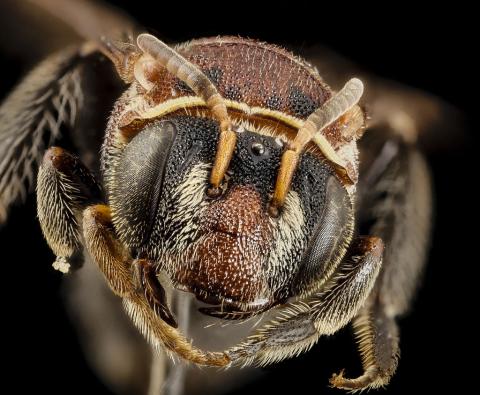It’s the Bees Knees – Or Actually, Eyes
If you follow my online writing, you might recall my last article about honey bees and how they forage for the stuff of survival using surprisingly complex methods. If you don’t recall or haven’t read my ramblings before, then go read that article now. I’ll wait here.
https://www.historicunioncounty.com/article/all-bees-report-dance-floor
Now that you are up to speed, let’s talk some more about bees. You know from my previous article that honey bees are really great at finding things and telling each other all about what they found. But how, you might ask, do bees know anything about direction? They don’t have GPS or Google Maps or compasses in their pockets. Heck, they don’t even have pockets!
What they do have are some pretty incredible eyes – five of them, to be exact. Yes, five. I’ll bet you thought bees only had two eyes. Well, they have the two large compound eyes that are obvious features of their heads, but they also have three tiny little eyes called ocelli. Scientists believe these little single-lens buttons help in navigation. They are arranged in a neat little triangle right in the center of their forehead and work in conjunction with the two larger eyes.
It’s not just the number of eyes a bee has that makes bee vision special – it’s how the bee uses them. There are two particularly remarkable features of a bee’s visual capability that help it to fulfill its duty to the hive and the queen. First, bees can see ultraviolet (UV) light. UV light is the energy that can give you a sunburn even if there are clouds in the sky. Bees can see this light. That means that they see shadows on a cloudy day the same way we see them when the sun is shining brightly. They can also see patterns on flowers that are invisible to the human eye. These patterns, found on the blooms of some species of plants, guide bees to their nectar-laden targets the same way runway markings guide airliners safely to the ground.
Secondly, bees can see polarized light. This is a particularly useful ability if you are a bee. Using your nifty UV vision to spot juicy flowers from the air won’t do the hive any good unless you can tell all of your worker pals where the flower patch is. Suppose you are a bee. You’ve just located a nice patch of peach blossoms to sip on. You know where your hive is. You know where the peach trees are. You just need one more point of reference to triangulate the coordinates accurately. What do you have? That’s right. It’s the sun. Bees can determine exactly where in the sky the sun is located by scanning and analyzing the actual rays emanating through the atmosphere. They can see these directional beams thanks to their ability to see the polarized light. Amazing.
So, there you have it. There’s no reliance on technology, cell phone signals or battery life for the bee bent on recruiting fellow foragers to the field. It’s just built-in ability and an uncanny connection to the world around it that makes the bee such an efficient little worker. Think about that next time you see a little yellow and black striped visitor hopping from bloom to bloom in your flower beds – and revel in the wonder of God’s creation.
This article was written by Tilmer Wright, Jr. Tilmer is an IT professional with over thirty years of experience wrestling with technology. In his spare time, he writes books. One of his books, The Bit Dance, weaves honey bee behavior into the fabric of technology. You might be surprised where that ends up. You can find links to Tilmer’s books at the following link.
https://www.amazon.com/Tilmer-Wright/e/B00DVKGG4K/ref=dp_byline_cont_eb…
- Log in to post comments
